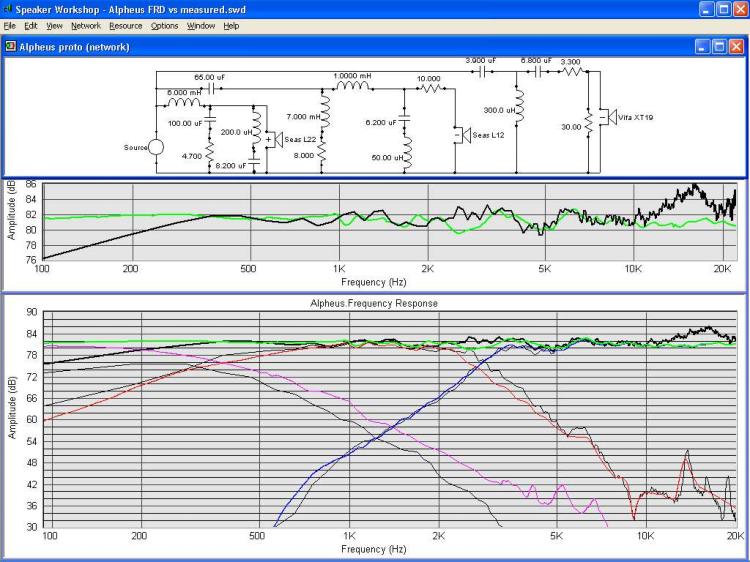
FRD Consortium Tools Example #2 - Using the FRD tools to design a three way speakerI recently began working on my first three way design project and prior to purchasing the drivers use the FRD tools to see how different driver combinations might work out. Based on my simulations I concluded that the Seas L22R4NX/P would mate well with the Seas L12RLY/P and the Vifa XT19 tweeter. I spent some time working on the crossover and was able to come up with a design that was flat within +/-1dB across most of the frequency range. I finally got around to buying the drivers (thanks John Krutke) and building the cabinets and was anxious to see how close my simulated crossover would match the actual measured speaker design using that same crossover. I was pretty surprised how close they actually matched... see for yourself in the plot below. The other area where the measured and simulated results diverge is at the extreme top end of the tweeter's response. To compensate for the added actual efficiency of the tweeter I simply increased the series tweeter resistor to 5 ohms which brought the top end down a bit but not entirely flat. With my previous two way project, the Microbe, I ran into a similar scenario except in that case I had to reduce the amount of tweeter attenuation. So based on those two examples it appears that getting the tweeter level right is the primary problem with designing a crossover based on pure simulation so I would recommend that you buy several resistors in order to experiment with different tweeter L-pad values. So this example reveals several things about the value of using FRD tools to design a crossover. It shows that the tools can be very accurate with the most common required adjustment being the tweeter attenuation. It also shows that even if you have measurement capabilities the simulated responses tend to be more accurate in the sub 500 Hz region where taking accurate measurements can be very difficult and this can be very critical when designing a three way speaker. One other benefit of using the FRD tools is that it allows you to experiment with different driver combinations and determine which ones have the highest probability of succeeding. As you can tell I'm a big fan of the FRD Consortium tools and they sure make my life a lot easier when it comes to designing speakers. |
